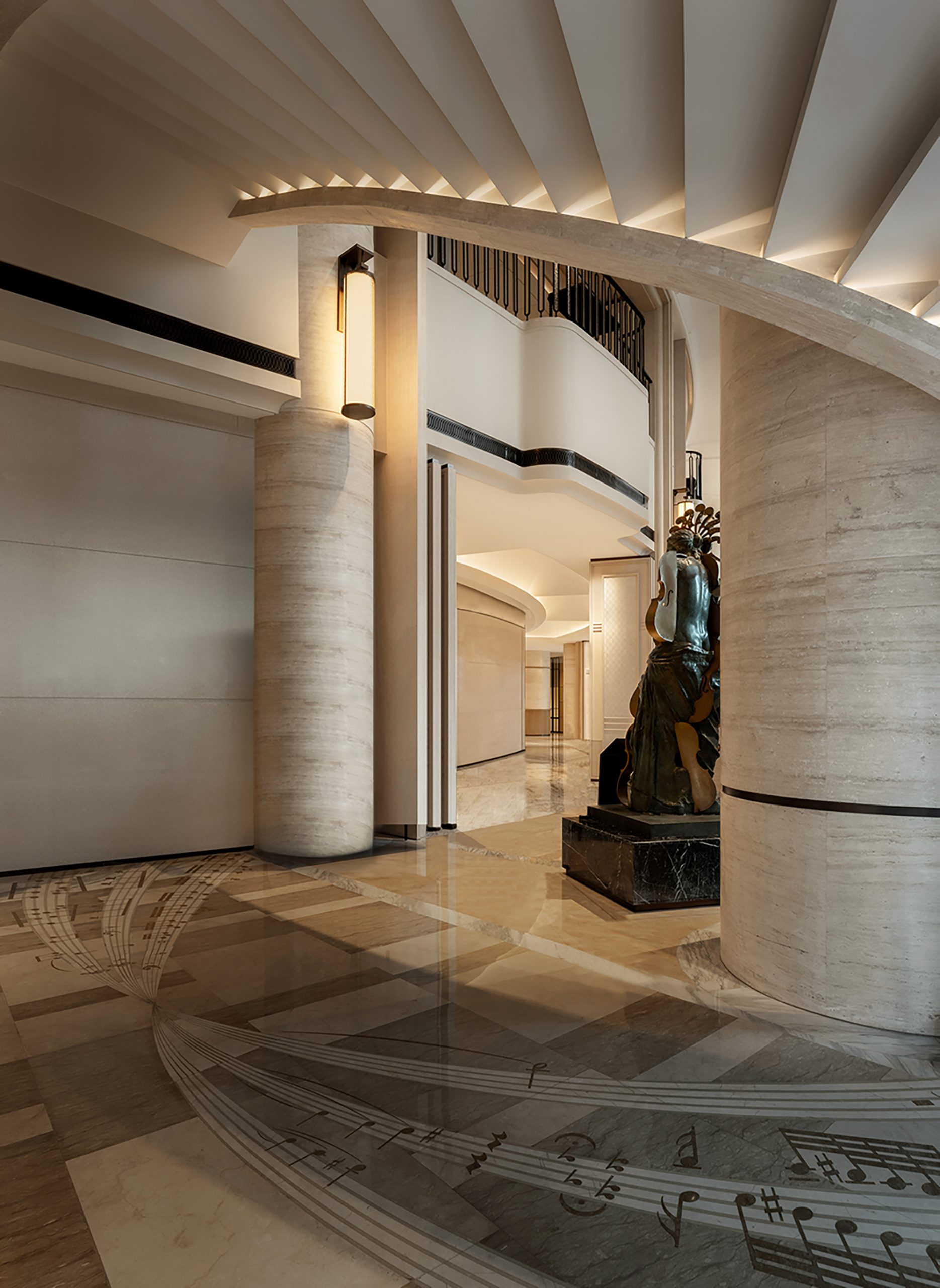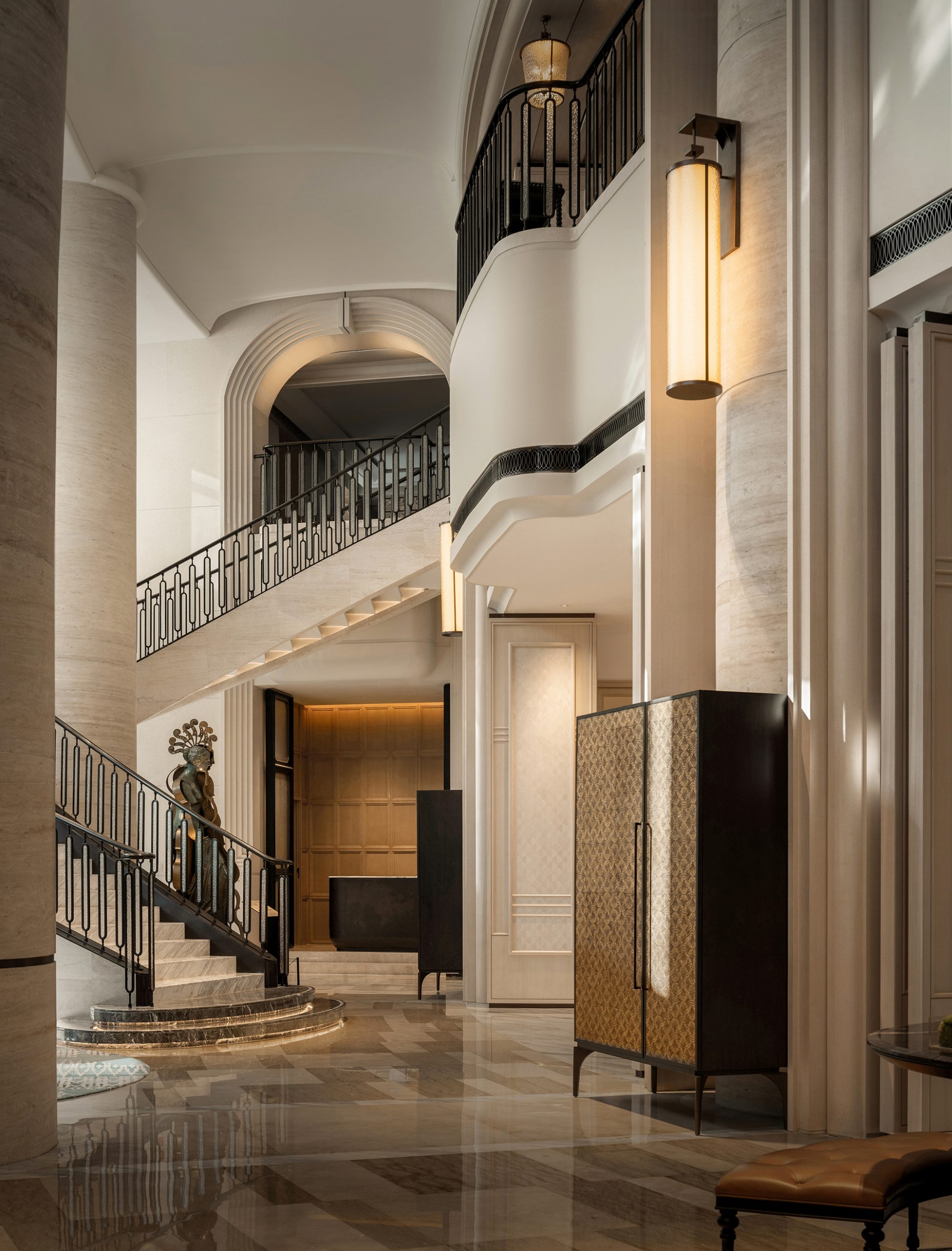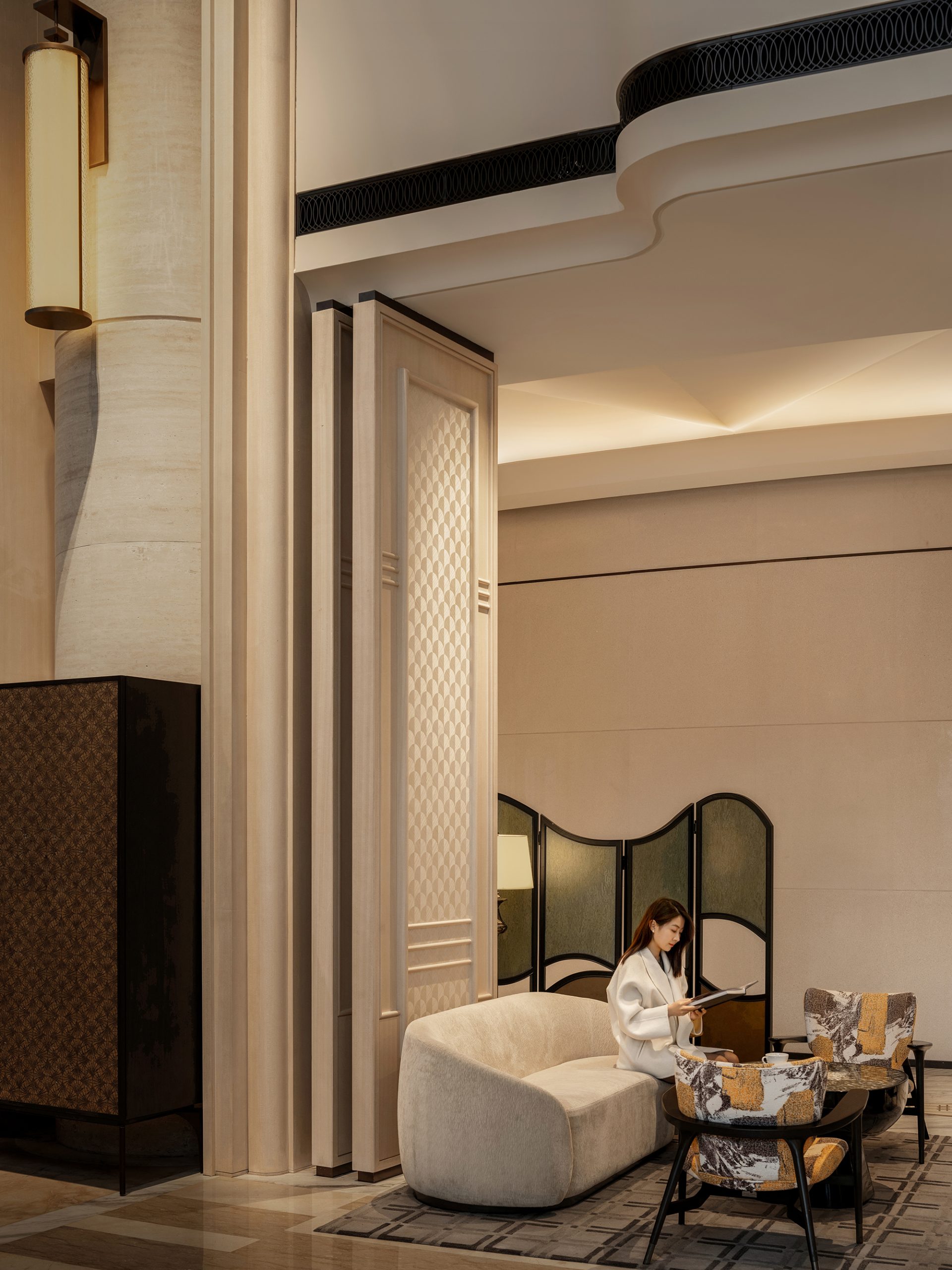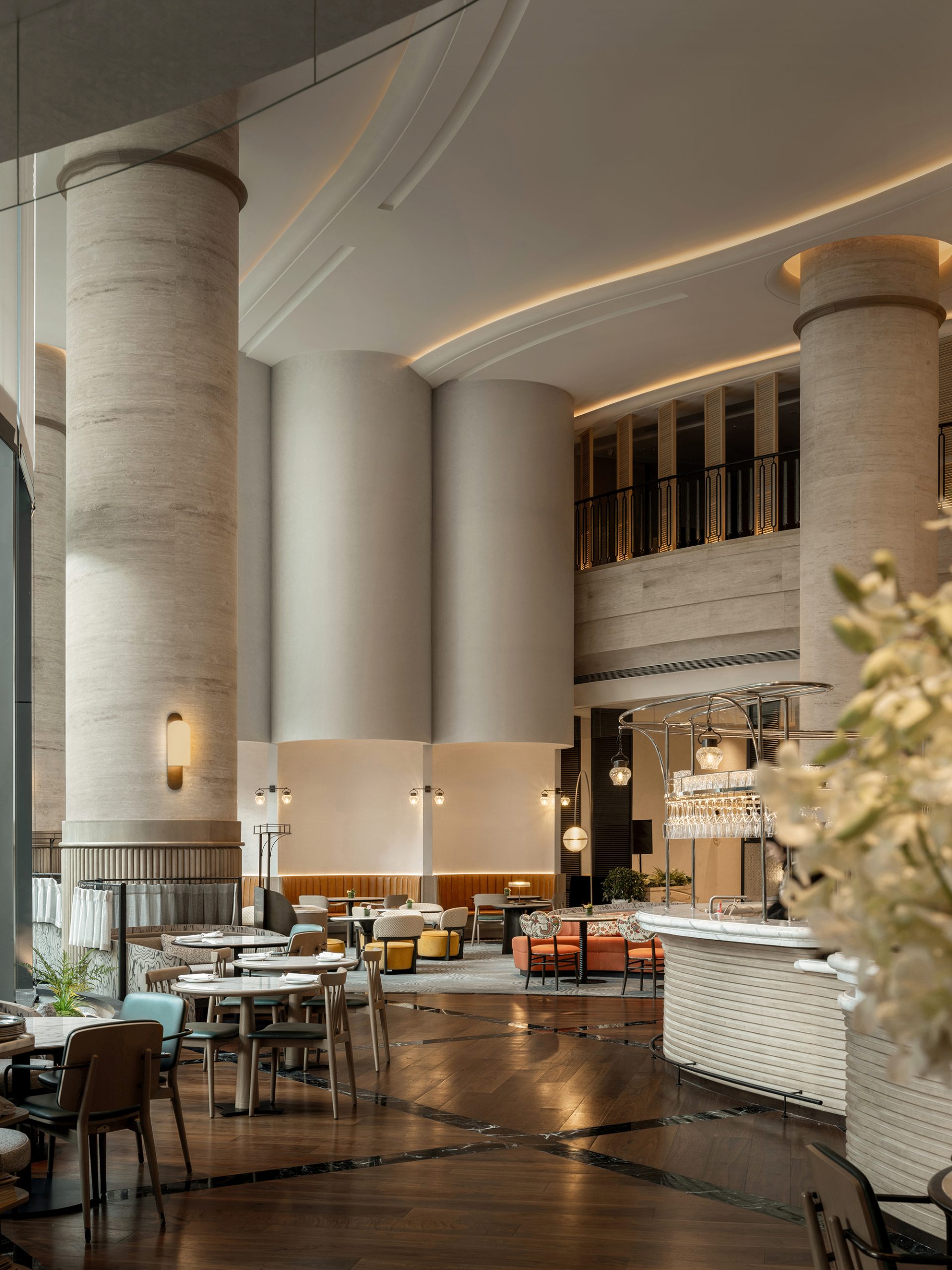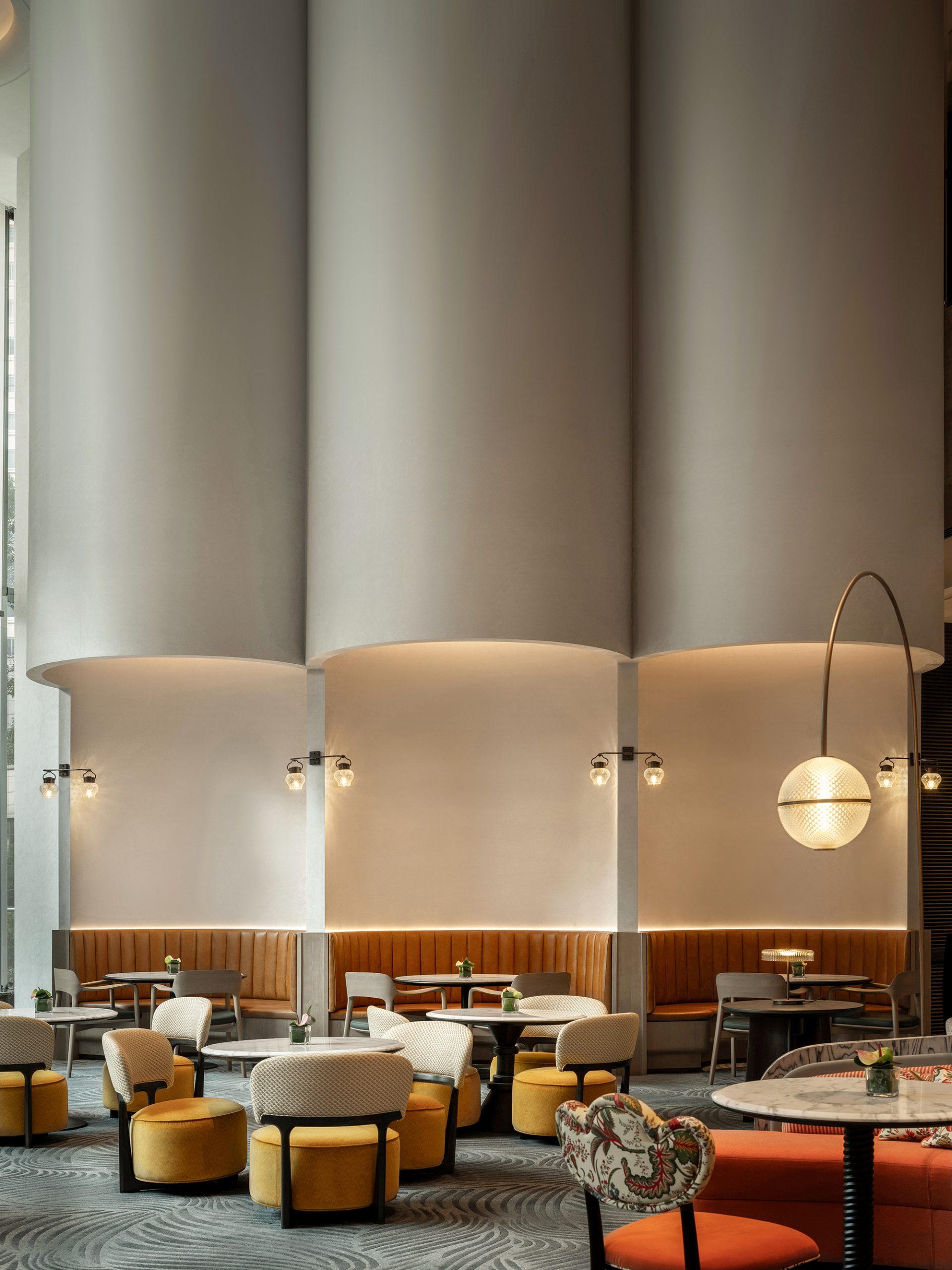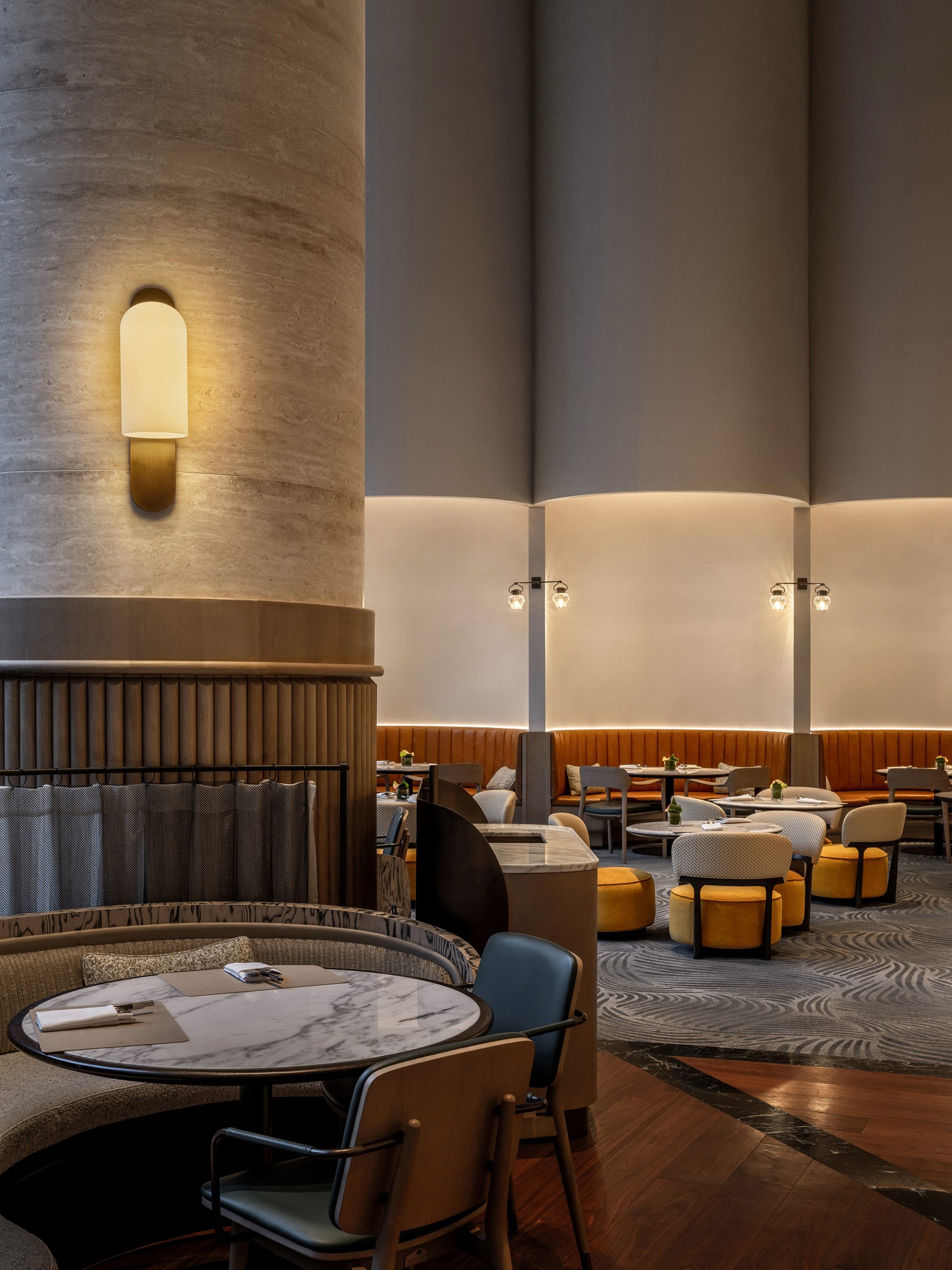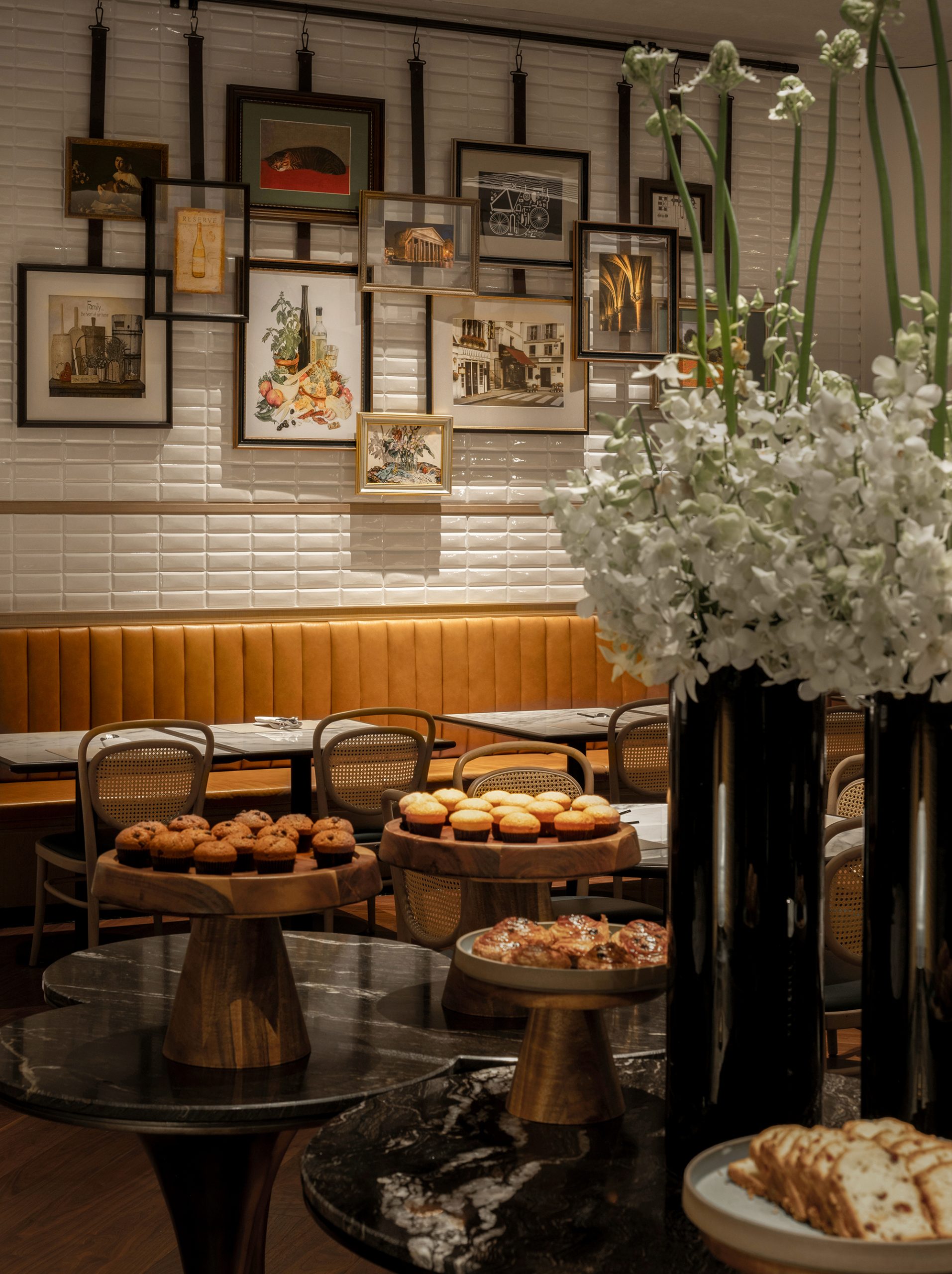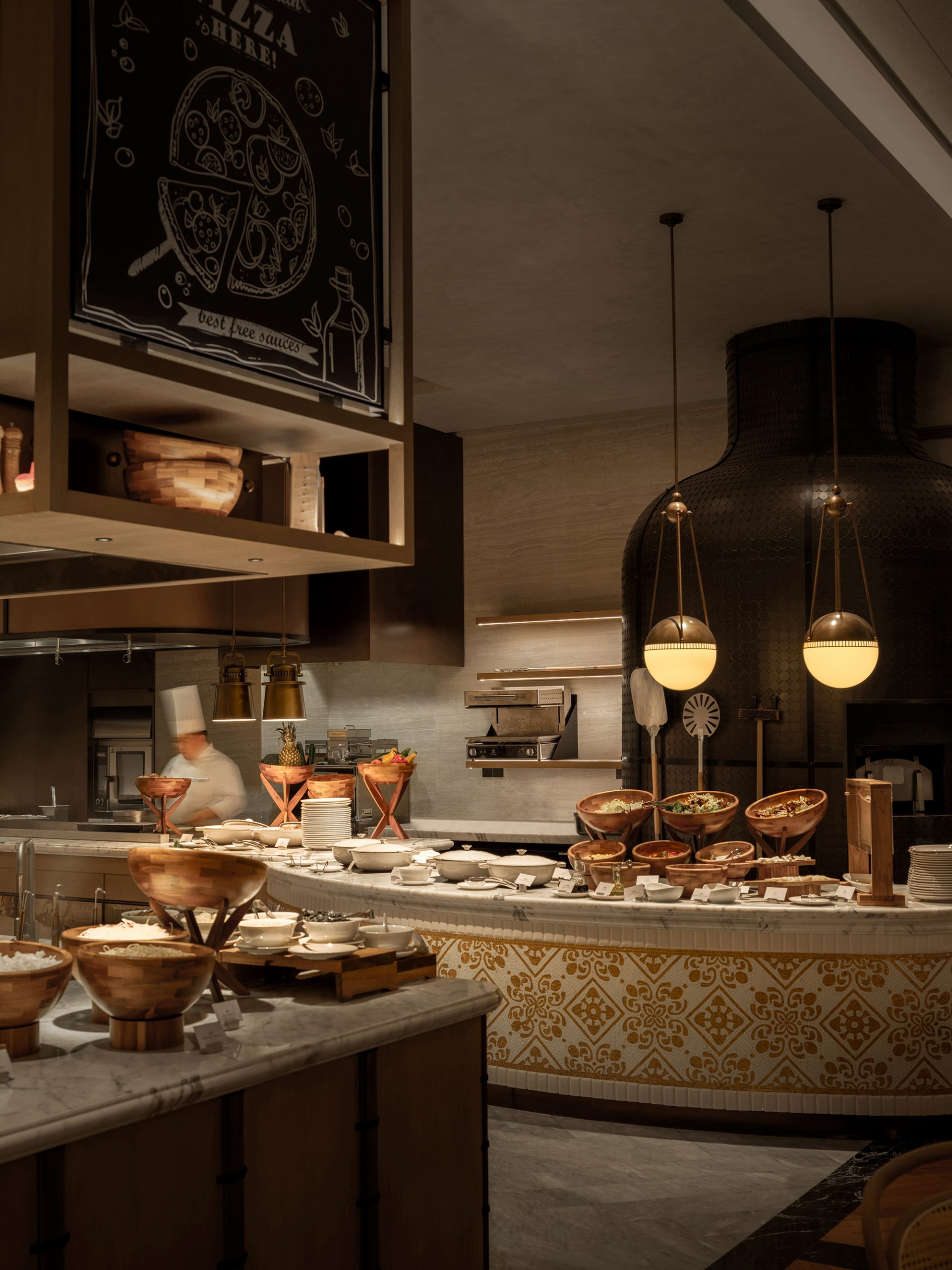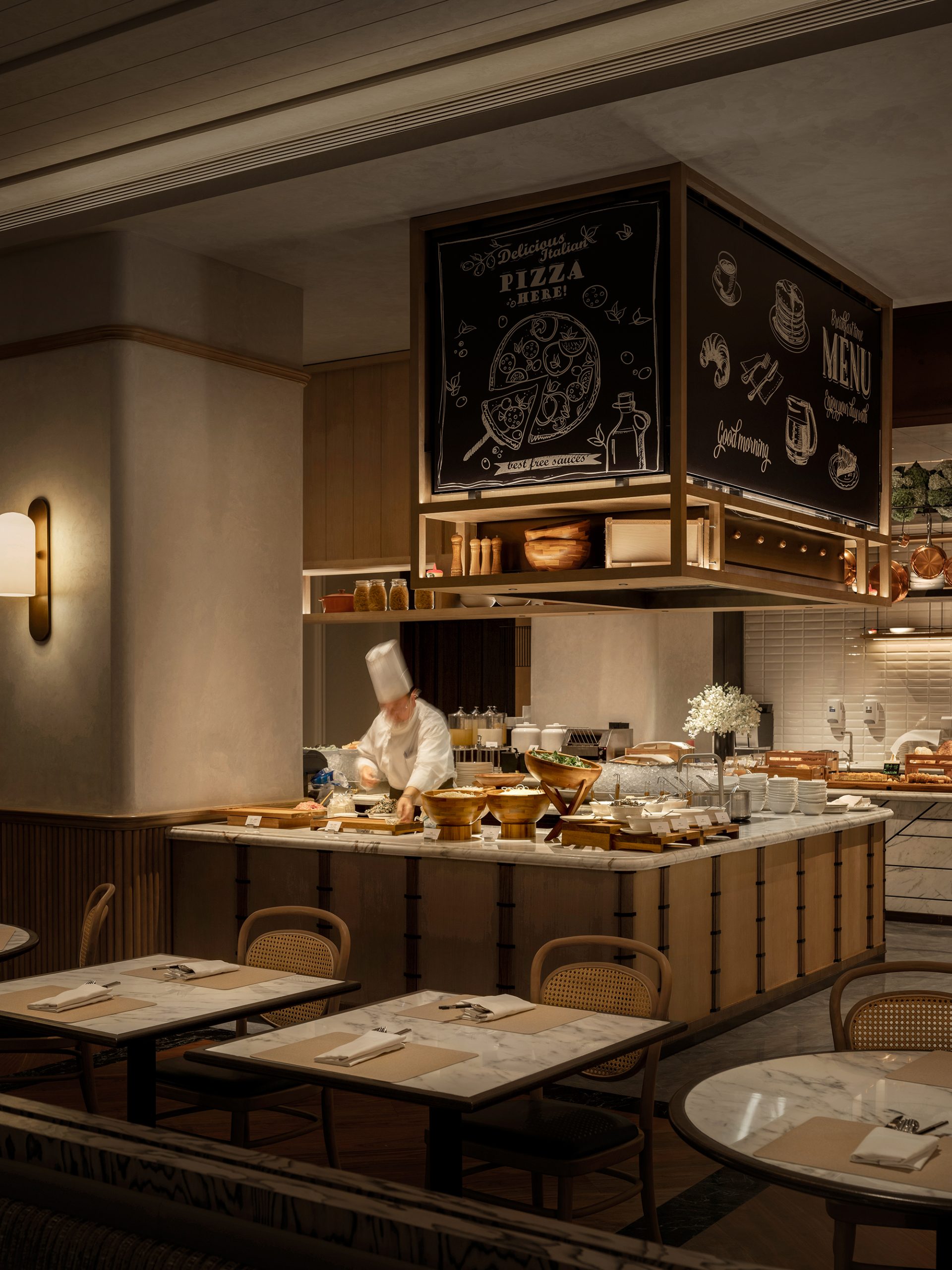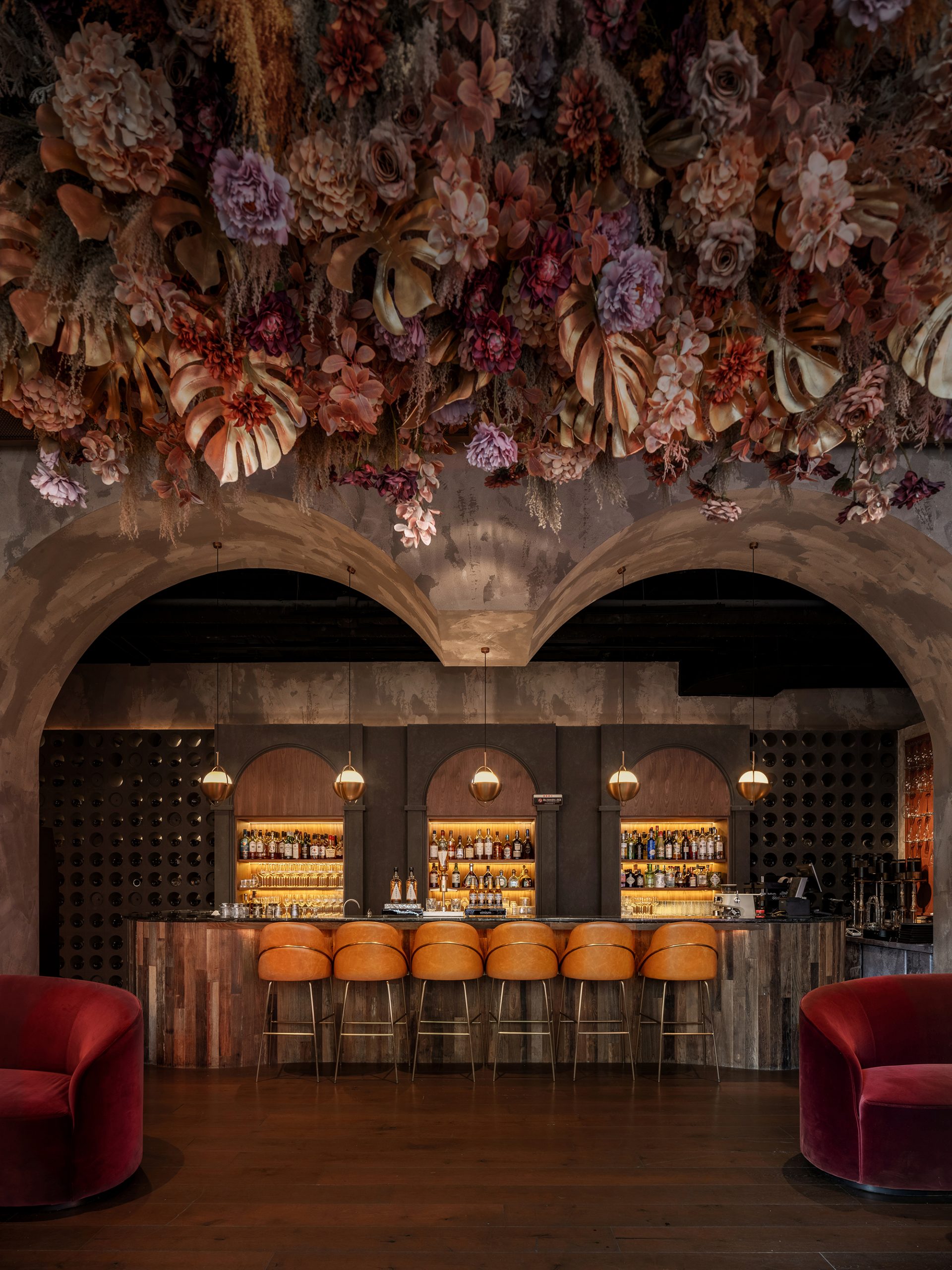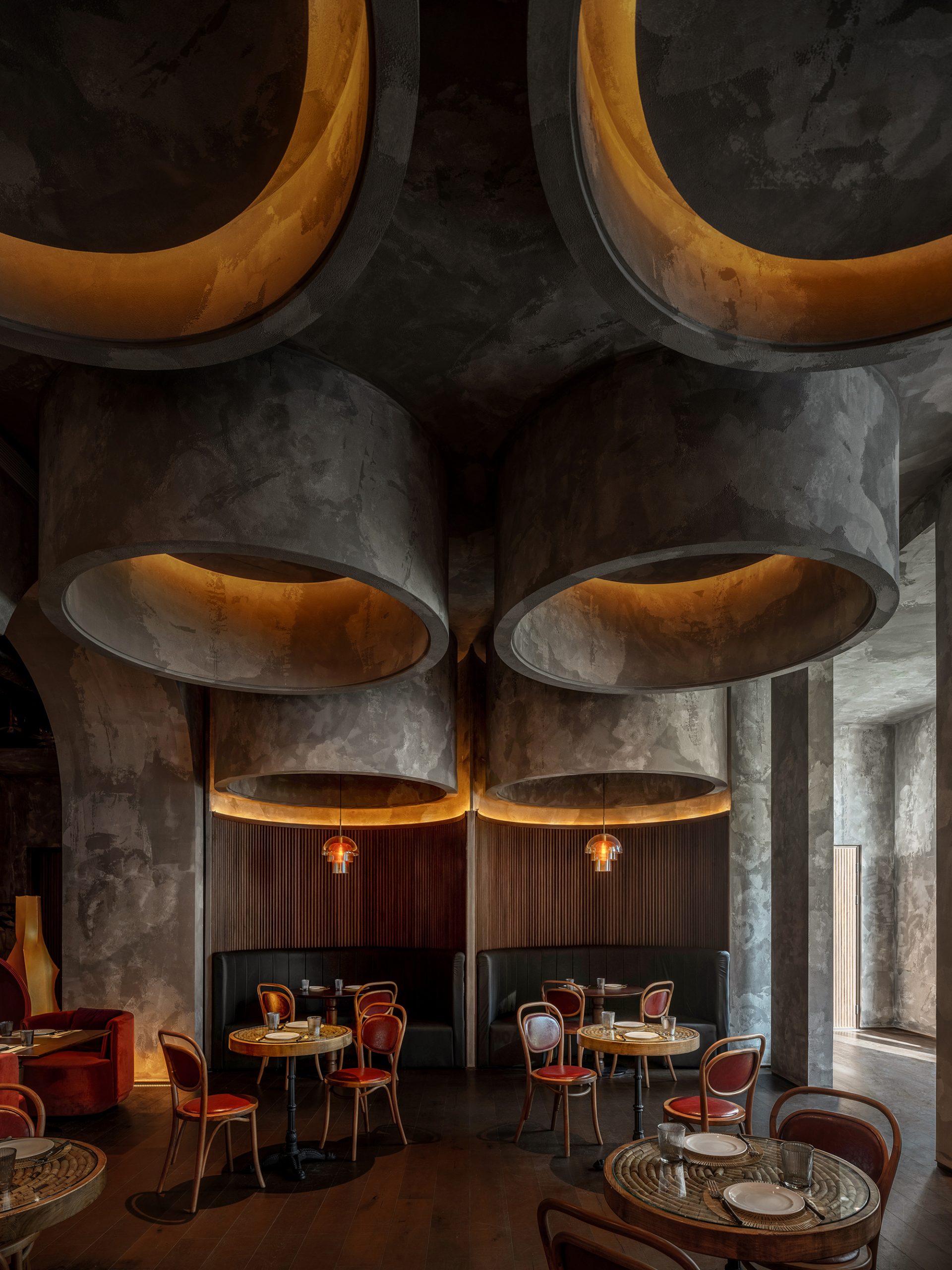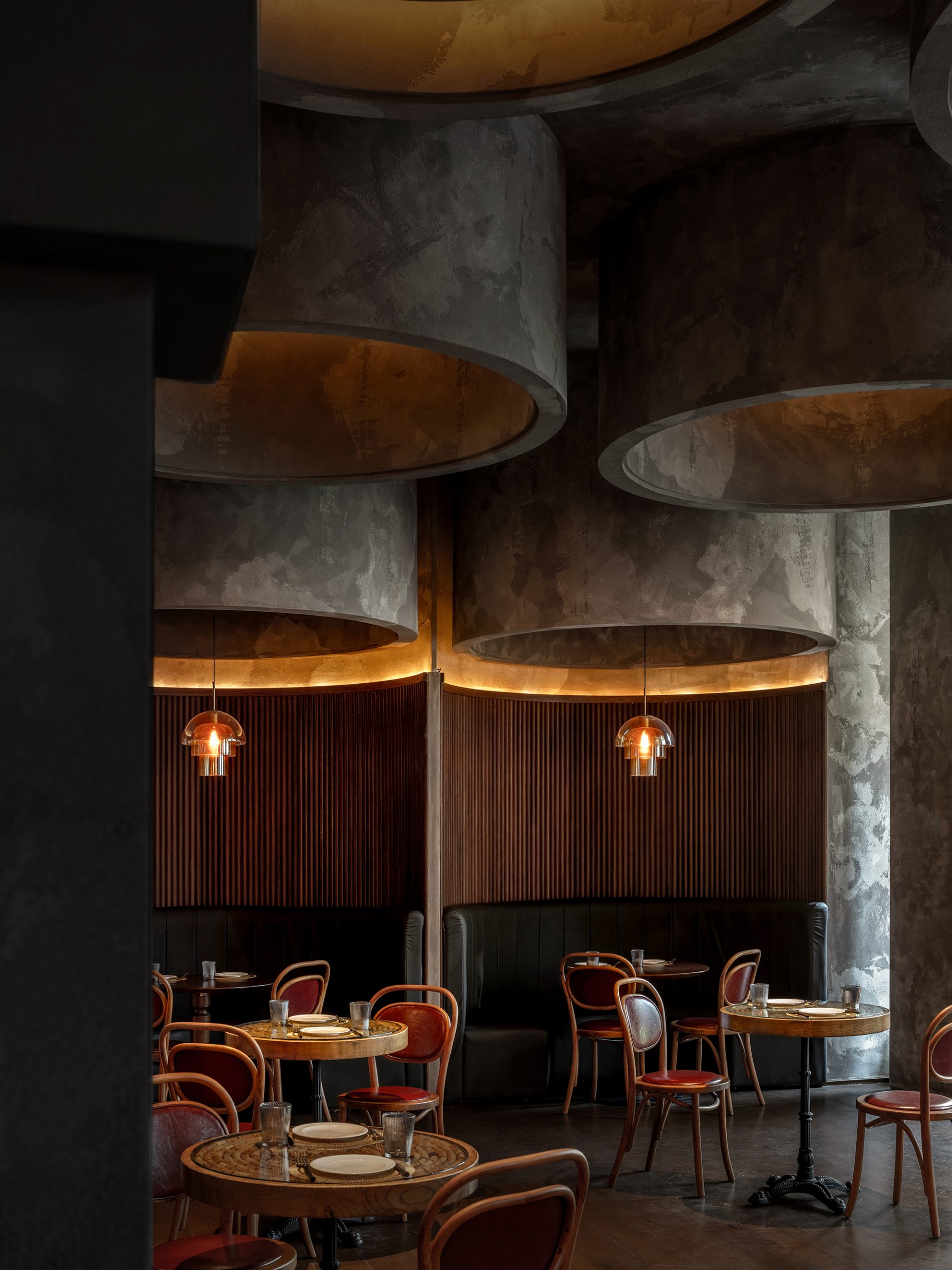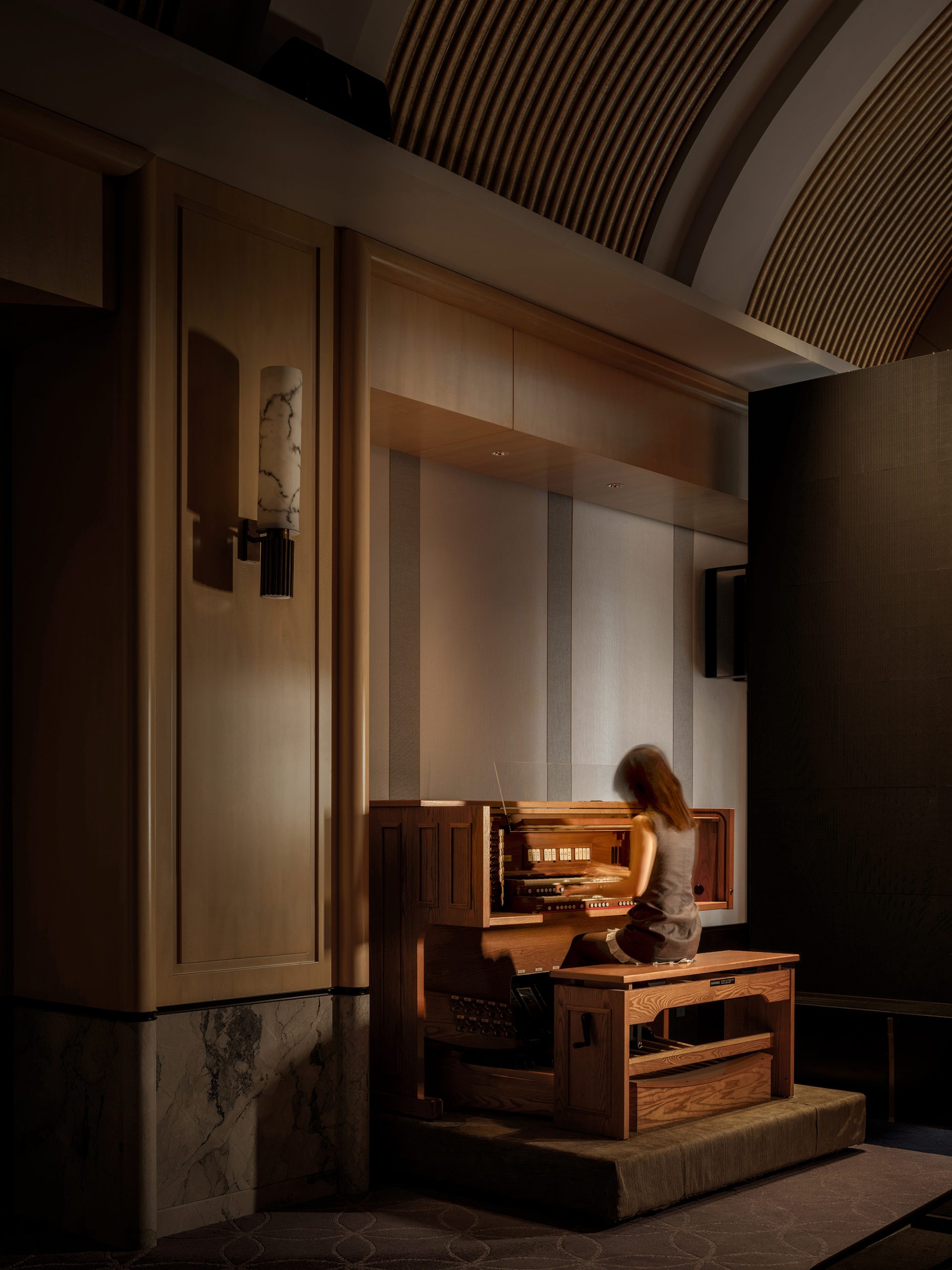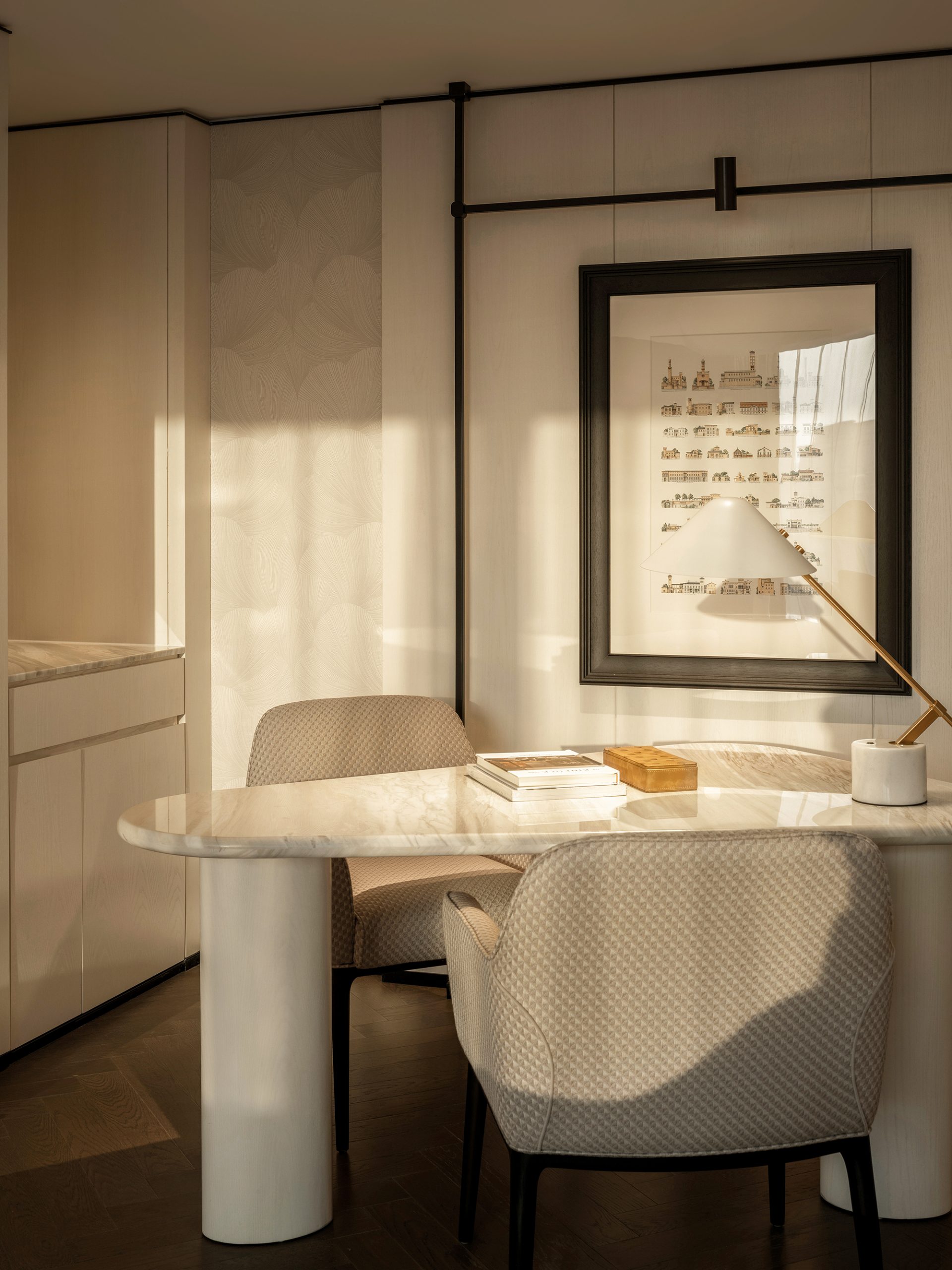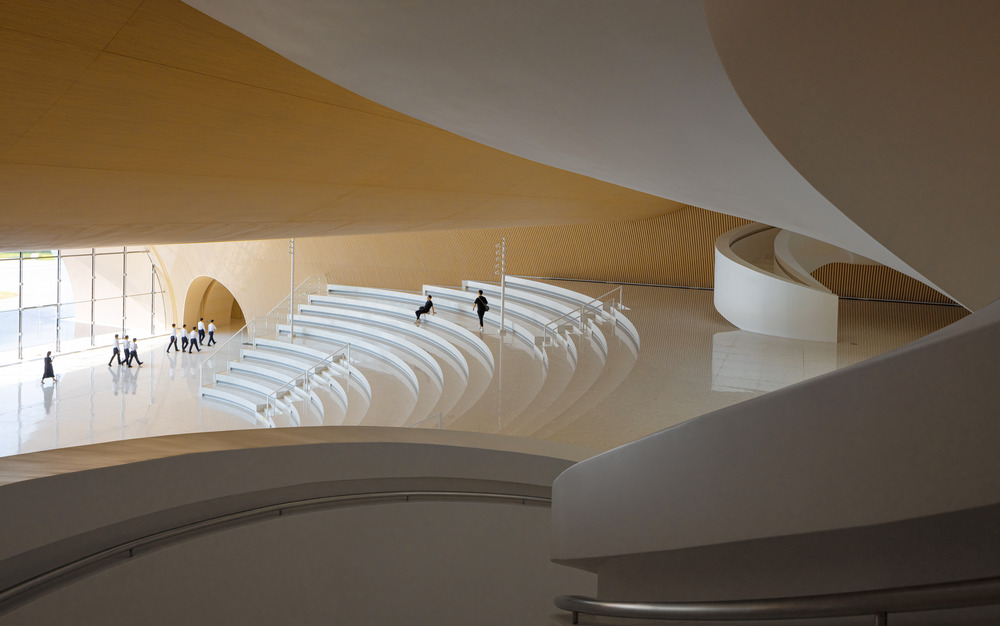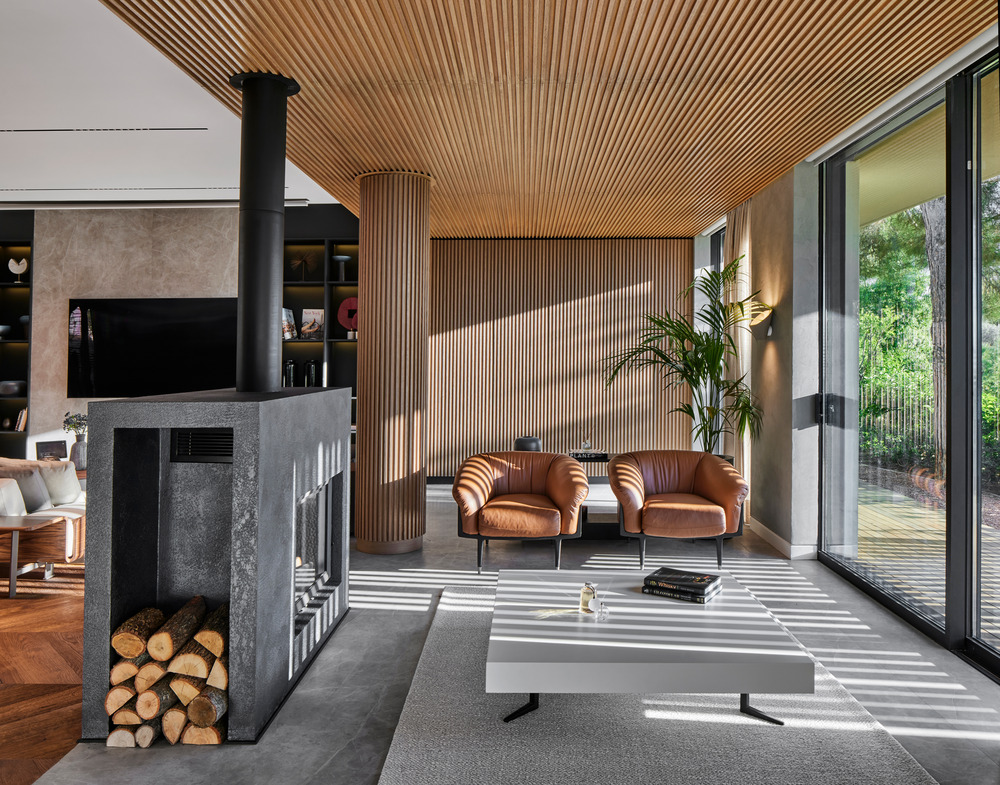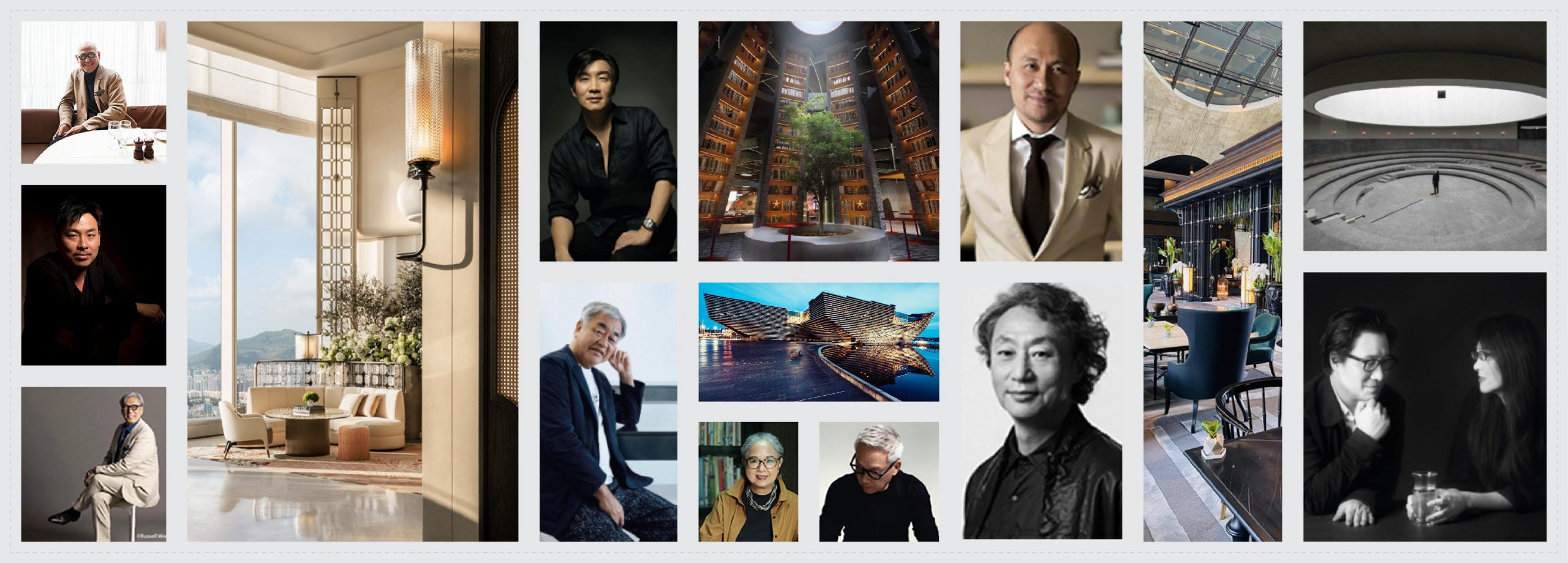Hilton’s journey in Shanghai began in 1988 with the opening of the city’s first international five-star hotel under a foreign brand. After closing in 2018, the brand makes a highly-anticipated return seven years later with the launch of Hilton Shanghai City Center, marking a new chapter in its legacy at the heart of the city.
- Photo credit: TOPIA
Inspired by the hotel’s iconic pipe organ and the melodies of J.S. Bach’s Toccata and Fugue in F Major, CCD orchestrates a timeless narrative that resonates beyond geographical boundaries. Through artistic exploration, the design harmonizes music with spatial dialogue, bridging past and present, tradition and innovation. As a “sequel” to Hilton’s story in Shanghai, this hotel reimagines a legend for a new era.
- Photo credit: TOPIA
The hotel lobby features intricate floor motif inspired by organ sheet music and comes alive as the timeless melody of Bach’s Toccata and Fugue in F Major flows through the space, inviting guests into an immersive symphony of sight and sound—a tribute to the musical heritage of the former Hilton Jing’an.
A semi-circular double-height ceiling bathes the lobby in natural light, while curved reception desks harmonise with gilded Oriental Gongbi screens and cascading crystal chandeliers. This interplay of East and West epitomises Shanghai’s haipai culture—a celebration of fusion and inclusivity.
- Photo credit: TOPIA
The lobby retained two cherished hallmarks of its legacy, Venus et Violoncelle, a sculpture by French École de Nice artist Arman, and the signature spiral staircase. Fluid lines reinterpret classic Shanghai architectural elements into contemporary motifs, weaving cultural memory into every surface.
Like a melody brought to life in space, the spiral staircase winds gracefully upward, its sinuous contours echoing the rhythmic tubular forms of the banquet hall’s pipe-organ-inspired design. The ascending metal handrails, reminiscent of musical staves, weave a sculptural symphony. Nearby, a curved lounge area is enriched with gentle lighting and artful decor, offering a sanctuary imbued with a sense of quiet poetry.
The Italian restaurant, Osteria Twelve 16, is envisioned as a “modern parlor across time and space,” weaving the poetic tapestry of Shanghai’s architectural legacy over the past century. A sweeping mural wall, elegantly merging Chinese and Western motifs, unfolds like a cinematic montage, evoking the poetic allure of 20th-century Shanghai salons in a contemporary setting.
- Photo credit: TOPIA
In the spirit of architectural deconstructivism, the space emerges as a sculptural narrative. The walls are elegantly sculpted through parametric modeling, featuring tubular textures reminiscent of organ pipes. These tubular lines stretch from the floor to the ceiling, rendered in a unified matte micro-cement finish, where the austere industrial grey reveals an unexpected touch of silk-like refinement.
Micro-cement and terrazzo sweep across the walls, their subdued grey textures evoking the passage of time, contrasted against the warmth of dark-toned walnut finishes. Light filters through like vibrating strings, dancing gracefully across the preserved concrete beams and columns, orchestrating a poetic “symphony of strength and softness.”
Crafted with a keen sense of multifunctional ingenuity, the space transitions seamlessly with the rhythm of the day. During daylight hours, it serves as a refined coffee salon, featuring semi-enclosed seating booths and a sweeping built-in bookshelf. The soft furnishings, rendered in an understated palette, exude refined elegance and poise, while wooden lattice screens cast dappled light onto the textured micro-cement walls. As night falls, the space transforms magically into a bar, where Shanghai’s timeless charm lingers in an endless, dreamlike reverie.
The open kitchen island becomes a canvas for an enchanting interplay of colours and textures, with vibrant flowers, greenery, and decorations composing a visual symphony. The glossy sheen of glazed ceramic plates engages in a gentle dialogue with the weathered patina of oxidised copperware, while suspended cooking utensils revive the lively soundscape of Shikumen alleyways from a bygone era.
- Photo credit: TOPIA
In the bar area, industrial aesthetics are reimagined through a deconstructionist lens. Exposed fair-faced concrete columns and ceilings reveal the raw, tactile imprint of their original casting, with rough textures and visible scratches evoking the sense of an architectural prototype still in formation. At the junction where ceiling and wall converge, suspended floral installations form a dramatic interplay with austere concrete finishes—a subtle nod to the balance of strength and softness inherent in haipai culture.
- Photo credit: TOPIA
The banquet hall design pays tribute to Pythagoras’ philosophy that symmetry forms the foundation of beauty. As the sole hotel banquet hall in Shanghai featuring a pipe organ, its soaring vaulted dome and vertically stretched screen walls create a dignified axial symmetry. This structural rhythm echoes the cadence of classical music, while its precise symmetry evokes the grandeur of French court architecture, radiating an aura of splendor and enduring elegance.
- Photo credit: TOPIA
Guestrooms feature a refined palette of white and grey, where curated furnishings and balanced accents define an aesthetic of understated luxury. Modern sleek lines harmonise gracefully with classical decor, as seen in the softly curved bathtubs and flowing mirrored surfaces, embodying the spirit of Shanghai’s historic Western villas. Expansive floor-to-ceiling windows open up to sweeping cityscapes, creating an oasis of understated luxury.
- Photo credit: TOPIA


